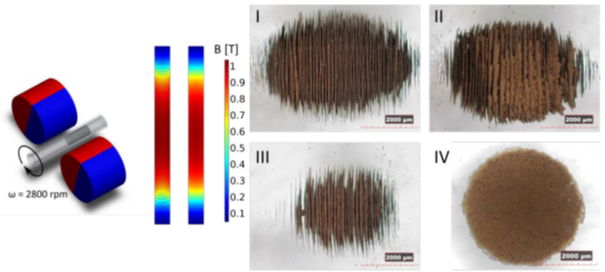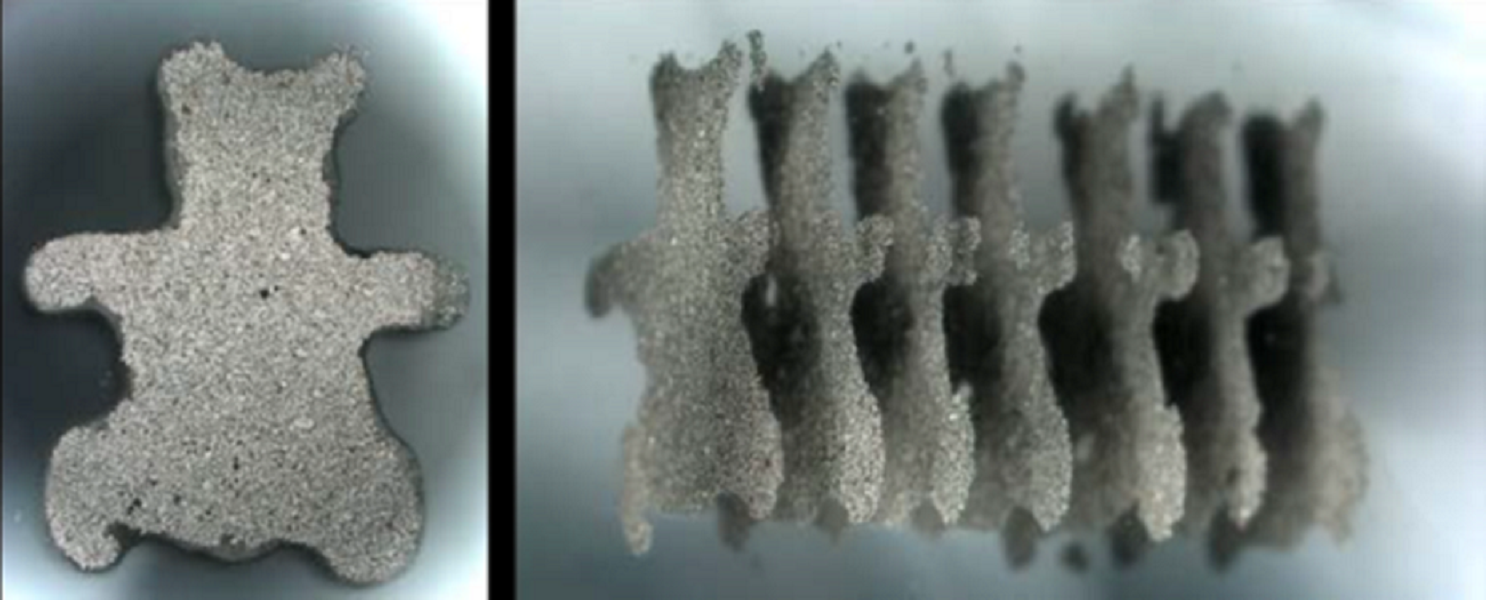Self-assembly is a process in which individual components form an organized structure or pattern by means of specific local interactions. This field of research can bring about many unique opportunities in the form of smart materials and systems, which are essential parts of modern technologies. Since its inception in the early 2000s, dynamic self-assembly has been studied vigorously in the context of structures and materials that would form and thrive outside of thermodynamic equilibrium. However, there has been no report yet on the application of dynamic self-assembly to fabricate “open” 3D materials in which the regularly spaced, self-assembling domains would be separated from one another.
 In a recent study published in Advanced Materials, Bartosz Grzybowski and co-workers from IBS Center for Soft and Living Matter and Department of Chemistry, Ulsan National Institute of Science and Technology, South Korea, report the application of a non-inertial, rotating frame combining the effects of external fields with centrifugal forces. In their system, the Frame of Reference was a rotating viscous polymer in which magnetic colloids are suspended and subject to an external static magnetic field. Depending on the orientation of the magnetic field with respect to the system’s axis of rotation, these structures range from arrays of parallel plates to single, double, triple, or even quaternary helices.
In a recent study published in Advanced Materials, Bartosz Grzybowski and co-workers from IBS Center for Soft and Living Matter and Department of Chemistry, Ulsan National Institute of Science and Technology, South Korea, report the application of a non-inertial, rotating frame combining the effects of external fields with centrifugal forces. In their system, the Frame of Reference was a rotating viscous polymer in which magnetic colloids are suspended and subject to an external static magnetic field. Depending on the orientation of the magnetic field with respect to the system’s axis of rotation, these structures range from arrays of parallel plates to single, double, triple, or even quaternary helices.
Interestingly, the interplay between magnetic and centripetal forces acting in the system produced 3D structures that would be hard, or perhaps even impossible, to assemble via conventional methods; open-lattice arrays of plates of various cross-sections, cups, or helices including single, double, triple or even quaternary windings. Once formed, these intricate 3D assemblies could be made permanent, by curing the polymer matrix, to produce magnetic or polymer composites.
On a conceptual level, this study opens up a completely new horizon for self-assembly conducted in non-inertial frames. Under such conditions, the reported “toolkit” of forces and effects that could be used for self-assembly can expand quite dramatically.

















